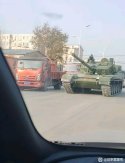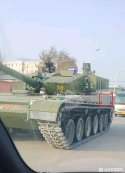It's very dubious if this is actually an advantage. In the battlefield, a M1 effectively only has whatever thin armor shields the blowout panels in the turret, which will be the most exposed part of the tank. The crew can often survive a M1 being mission killed from ammo cook off, but then you have a likely wounded crew stranded as dismounted infantry in a modern battlefield environment where their survival chances range from low to very low.
It's not dubious at all. Many crews in Ukraine survived due to better safety. A crew being "stranded" is far more preferable than a crew being blown up. Which has happened even to the T-90M, where the autoloader is far better protected from any catastrophic explosion. The tank crew is easily the most important part of the tank and should be protected at all costs, even if it means increasing the chance of a mission kill.
It's all moot anyway, a tank can be fairly easily disabled, blinded, and stopped by a competent military unit. Experienced crews are well aware of their vehicles' capabilities and weaknesses. They will approach any engagement with intent to minimize those weaknesses and increase their own chance of survival.
You can't compensate or plan for your tank suffering a catastrophic explosion because your auto-loader carousel blew up from a mine.



